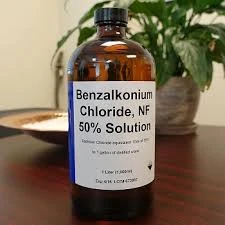coagulation flocculation
Coagulation and Flocculation Essential Processes in Water Treatment
Coagulation and flocculation are critical processes in water treatment that play a vital role in ensuring the safety and quality of drinking water. These processes are primarily used to remove suspended solids, colloids, and various impurities from water, making it cleaner and safer for consumption.
Coagulation The Initial Step
Coagulation involves the addition of chemical coagulants to water, which destabilizes the suspended particles. Common coagulants include aluminum sulfate (alum), ferric chloride, and polyaluminum chloride. When these chemicals are introduced into the water, they react with the particles, neutralizing their charge. Most suspended particles in water carry a negative charge, which keeps them dispersed. By neutralizing these charges, coagulants allow the particles to clump together, creating larger aggregates known as flocs.
The effectiveness of coagulation depends on various factors, including the type and dosage of the coagulant, pH levels, temperature, and the nature of the impurities present in the water. Proper optimization of these factors is crucial to maximize the efficiency of the coagulation process.
Flocculation Building Larger Aggregates
Once the coagulation process has created initial flocs, flocculation takes over. Flocculation is a gentle mixing process that encourages the growth of these small flocs into larger and more settleable aggregates. During flocculation, water is stirred slowly to allow the small flocs to collide and adhere to one another. This step is essential because larger flocs are easier to remove from the water during subsequent sedimentation processes.
Flocculation typically occurs in specially designed tanks called flocculators, where the water is slowly agitated. The duration and intensity of mixing are carefully controlled; too much agitation can break apart the flocs, while too little may not promote adequate floc formation.
coagulation flocculation

The Importance of Coagulation and Flocculation
The significance of coagulation and flocculation extends beyond just improving water clarity. These processes effectively reduce the levels of turbidity, organic matter, and pathogens, providing multiple health benefits. By removing these contaminants, the likelihood of waterborne diseases is significantly decreased.
Additionally, effective coagulation and flocculation can also enhance the performance of downstream water treatment processes. By reducing the load of solids entering the filtration systems, plants can operate more efficiently, resulting in lower operational costs and improved water quality.
Challenges and Innovations
While coagulation and flocculation are essential, they are not without challenges. The choice of coagulant can lead to the formation of chemical sludge, posing disposal concerns. Furthermore, the use of chemical coagulants raises environmental considerations, as residual chemicals must be managed to prevent negative impacts on the ecosystem.
In response to these challenges, researchers are exploring alternative treatments, such as bio-coagulation using natural materials like plant extracts or biopolymers. These alternatives aim to reduce chemical usage and associated environmental impacts while maintaining effective water treatment capabilities.
Conclusion
In summary, coagulation and flocculation are indispensable processes in modern water treatment that ensure the provision of clean and safe drinking water. The effectiveness of these processes relies on careful management of various factors, and ongoing research into innovative alternatives promises to enhance their sustainability. As the demand for clean water continues to grow, understanding and optimizing these processes will be crucial in meeting public health needs and protecting our water resources.
-
2 Phosphonobutane 1,2,4 Tricarboxylic Acid (PBTCA): Superior Scale & Corrosion InhibitorNewsAug.31,2025
-
Dodecyldimethylbenzylammonium Chloride: High-Purity DisinfectantNewsAug.30,2025
-
2-Phosphonobutane-1,2,4-Tricarboxylic Acid: Scale & CorrosionNewsAug.29,2025
-
Premium Isothiazolinones | Broad-Spectrum Biocidal SolutionsNewsAug.28,2025
-
LK-319 Special Scale And Corrosion Inhibitor For Steel Plants: Advanced Solutions for Industrial Water SystemsNewsAug.22,2025
-
Flocculant Water Treatment: Essential Chemical Solutions for Purification ProcessesNewsAug.22,2025





